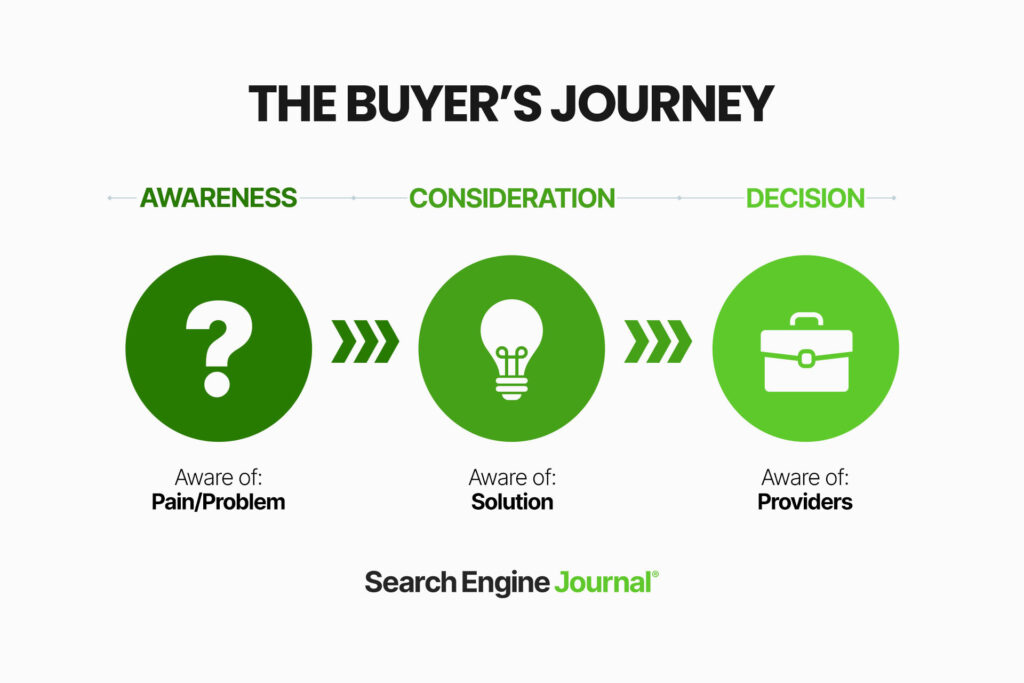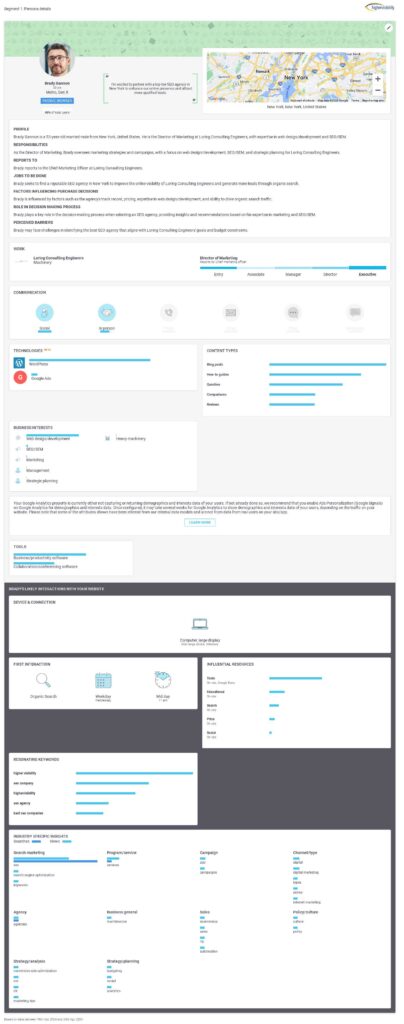

Last updated on

Effective SEO content serves as a roadmap, guiding users not only through your website but also through their individual quests for answers and solutions.
Every visitor to your site arrives with unique intentions and levels of awareness. Some may be leisurely browsing for the first time, while others are actively researching your offerings or are poised to make a purchase.
So, how can you ensure your website accommodates these varied objectives and requirements? And how can you leverage content to shepherd visitors from initial interest to loyal patronage?
The solution lies in content mapping.
In this article, we’ll explore the significance of content mapping in SEO and elucidate how to craft a content strategy that steers visitors toward conversion.
Let’s delve deeper.
Content mapping is the systematic approach of tailoring content to meet the distinct requirements of your target audience across different phases of their purchasing journey.

This entails identifying your audience, grasping the type of content they seek during different stages of decision-making, and furnishing that content strategically to lead them from initial discovery to a final purchase verdict, and even further.
In essence, content mapping revolves around structuring your website in a manner that ensures pertinent content reaches the appropriate user precisely when they need it.
Crafting a content map can enhance your SEO endeavors in numerous ways. Below are the primary rationales why content mapping holds significance for SEO.
Google strives to present the most pertinent results possible for users’ search inquiries. The greater the relevance of content, the higher its potential to rank prominently in search results. Content mapping serves to augment the relevance of your content by harmonizing it with the search intents of your target audience at various points along their purchasing journey.
Content that is relevant and directly caters to the goals and needs of visitors tends to be more captivating. Enhanced engagement results in prolonged session durations, diminished bounce rates, and increased interactions – all indicators to Google that your site offers high-quality content deserving of prominent placement in its search results.
Content mapping is the process of pinpointing the specific keywords utilized by potential customers throughout their purchasing journey.
By understanding the keywords employed at different phases of the customer lifecycle, you can integrate these terms into relevant pages on your website.
Targeting a diverse array of keywords enables you to address a wider spectrum of user intents and enhances your organic presence.
A meticulously crafted content map establishes a coherent and structured content framework for your website.
A rational site layout enhances user experience and facilitates accurate page indexing by search engines.
Furthermore, strategic interlinking among thematically-aligned content can bolster your site’s credibility on specific subjects.
A content map offers a comprehensive perspective of your website’s content, delineating the connections among various pieces of content and their corresponding stages in the buyer’s journey.
Equipped with a map, it becomes simpler to identify outdated or underperforming sections of your site and uncover fresh opportunities for content development.
It’s crucial to bear in mind that search engines prioritize fresh and current content, which can contribute to sustaining or enhancing your rankings over time.
Let’s now delve into the process of content mapping.
Step one involves developing a comprehensive comprehension of your diverse customer segments.
Understanding the needs, aspirations, motivations, and potential obstacles of your ideal customers is key to crafting content that resonates with them effectively.
The objective is to construct buyer personas (also known as customer avatars) that accurately represent your target audience.
Begin by amassing a wealth of information about your current customers through surveys, interviews, customer service records, and website analytics.
Seek out demographic insights such as age, location, income level, as well as psychographic details including personal interests, purchasing preferences, and lifestyle choices. Understand the hurdles that prompt them to seek out products and services similar to yours.
After gathering the necessary data, it’s time to flesh out your buyer personas. Each persona should be rich in detail and tailored, much like this example:
Here’s a draft of a sample buyer persona crafted for your agency, HigherVisibility:

Next, you’ll want to outline the customer journey for each of your personas. This will serve as a roadmap for crafting content that addresses the unique needs of each persona throughout their decision-making process.
Typically, the customer journey consists of three key phases:
Now it’s time to organize your current content based on where it aligns within the customer journey.
A popular strategy involves dividing content into three main categories:
Once you’ve identified the placement of each page within the customer journey, the next step is to ensure that these pages are optimized with the right keywords.
Before diving in, it’s advisable to first refresh and expand your existing keyword list to ensure it’s comprehensive and up-to-date.
The goal is to create a detailed understanding of the types of queries people make when searching for TOFU, MOFU, and BOFU content related to your business. This should include information on search intent and search volume.
Once your updated keyword list is prepared, ensure that each page is optimized for a relevant primary keyword, if it isn’t already. This ensures alignment between the content and the search queries potential customers are making.
Here are some key practices to bear in mind while optimizing your content for keywords:
Internal links serve as pathways guiding users from one page to another within your website. Beyond facilitating navigation, they play a crucial role in distributing link equity, or ranking power, from high-authority pages to lower-authority ones.
Given that the ultimate goal of your website is to drive conversions, it’s vital for each page to feature links that guide users through the buyer’s journey.
For instance, let’s consider a scenario where your business specializes in selling and installing smart home technology.
Suppose you have a blog post discussing “Improving Home Security” (TOFU). Within this post, you could include an in-text link leading to a related comparison guide titled “The Best Smart Home Security Systems of 2024” (MOFU). Similarly, within the comparison guide, you might include a link directing readers to your testimonials page (BOFU). This strategic linking ensures a seamless progression for users through various stages of the buyer’s journey.
The subsequent phase involves pinpointing chances to develop fresh content or enhance existing content.
Following the expansion of your keyword inventory in Step 4, you’re likely to uncover numerous pertinent keywords lacking corresponding content. Utilize these keywords as the foundation for your upcoming content schedule.
When determining which keywords to prioritize in your production schedule, remember the following:
Crafting a content map is a potent strategy for any business seeking to boost their organic visibility and optimize their website’s capacity to draw in qualified visitors and convert them into customers.
By comprehending and addressing the diverse needs of your audience across the buyer’s journey, you can establish your brand as a valuable source of information and seamlessly lead visitors from initial awareness to making a purchase decision.
Building a content map demands meticulous planning and attention to detail. Regard it as a dynamic document that evolves alongside your audience’s needs and business objectives.
Regularly revisiting and refining your content map will ensure its ongoing relevance and effectiveness in steering your content strategy.
Original news from SearchEngineJournal